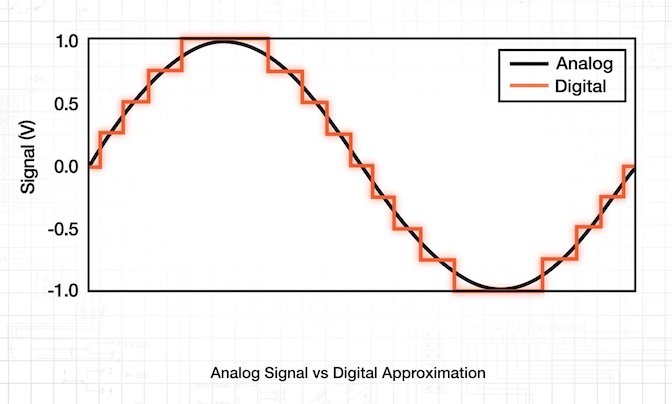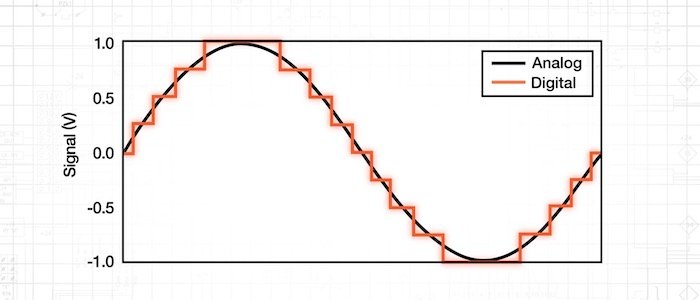In this article, the shortest of our series, we’ll give a high-level view of what a mixed-signal IC design flow—a design flow for an IC that has both analog and digital circuitry—might look like.
If you’d like to catch up to the rest of the series, check out the articles below:

Data converters—ADCs (analog-to-digital converters) and DACs (digital-to-analog converters)—are common examples of mixed-signal ICs
The Role of Mixed-Signal ICs
Modern ICs are often composed of elements from each domain. There’s also a variety of system-on-chip (SoC) and system-in-package (SiP) technologies that include each IC design domain on a single IC, or in packages with various semiconductor processes and sub-ICs.
This is increasingly the case with compact and sophisticated wireless communications and sensing hardware, such as automotive radar, where a single device performs a wide range of sensing, processing, conversion, mathematical manipulation, storage, decision making, and communication.
These mixed-signal designs usually involve several teams that must work with some unifying EDA tool that ensures each aspect of the design follows process constraints. This is increasingly important as these SoC processes are often strained to meet the analog and RF performance criteria due to relatively poor optimization for these domains.
As new IoT, wireless communication (e.g., Wi-Fi, 5G cellular, LoRa, etc.), and sensing technologies are leading to increasingly complex mixed-signal ICs, EDA tools and foundry processes are advancing to meet these new application requirements.
Mixed-Signal IC Design Flow
- Domain-specific design
- Analog/RF
- Schematic capture
- Analog simulation
- Digital
- Design entry
- Behavioral simulation
- Analog/RF
- Mixed-signal analysis
- Physical design
- Analog/RF
- Physical layout
- Physical verification
- Post layout simulation
- Digital
- Synthesis
- Place and route
- Functional verification
- Analog/RF
- Full chip assembly & physical verification
- Mixed-signal functional verification
- Tape-out
With this, we conclude our overview series of the four types of IC design. What other IC design basics would you like to see addressed? Let us know in the comments.


